Wednesday, March 3rd 2021

AMD Radeon RX 6700 XT: All You Need to Know
AMD today announced the Radeon RX 6700 XT, its fourth RX 6000 series graphics card based on the RDNA2 graphics architecture. The card debuts the new 7 nm "Navi 22" silicon, which is physically smaller than the "Navi 21" powering the RX 6800/RX 6900 series. The RX 6700 XT maxes out "Navi 22," featuring 40 RDNA2 compute units, amounting to 2,560 stream processors. These are run at a maximum Game Clock frequency of 2424 MHz, a significant clock speed uplift over the previous-gen. The card comes with 12 GB of GDDR6 memory across a 192-bit wide memory interface. The card uses 16 Gbps GDDR6 memory chips, so the memory bandwidth works out to 384 GB/s. The chip packs 96 MB of Infinity Cache on-die memory, which works to accelerate the memory sub-system. AMD is targeting a typical board power metric of 230 W. The power input configuration for the reference-design RX 6700 XT board is 8-pin + 6-pin.
AMD is marketing the RX 6700 XT as a predominantly 1440p gaming card, positioned a notch below the RX 6800. The company makes some staggering performance claims. Compared to the previous-generation the RX 6700 XT is shown beating the GeForce RTX 2080 Super. NVIDIA marketed the current-gen RTX 3060 Ti as having the same performance outlook. Things get interesting, where AMD shows that in select games, the RX 6700 XT can even beat the RTX 3070, a card NVIDIA marketed as matching its previous-gen flagship, the RTX 2080 Ti. AMD is pricing the Radeon RX 6700 XT at USD $479 (MSRP), which is very likely to be bovine defecation, given the prevailing market situation. The company announced a simultaneous launch of its reference-design and AIB custom-design boards, starting March 18, 2021.AMD's performance claims follow.
AMD is marketing the RX 6700 XT as a predominantly 1440p gaming card, positioned a notch below the RX 6800. The company makes some staggering performance claims. Compared to the previous-generation the RX 6700 XT is shown beating the GeForce RTX 2080 Super. NVIDIA marketed the current-gen RTX 3060 Ti as having the same performance outlook. Things get interesting, where AMD shows that in select games, the RX 6700 XT can even beat the RTX 3070, a card NVIDIA marketed as matching its previous-gen flagship, the RTX 2080 Ti. AMD is pricing the Radeon RX 6700 XT at USD $479 (MSRP), which is very likely to be bovine defecation, given the prevailing market situation. The company announced a simultaneous launch of its reference-design and AIB custom-design boards, starting March 18, 2021.AMD's performance claims follow.
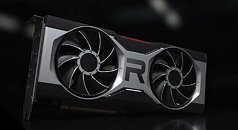
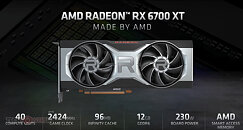
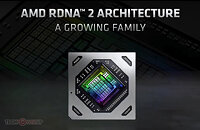
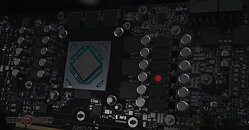
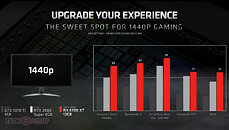
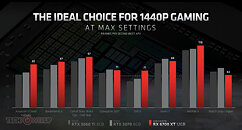
104 Comments on AMD Radeon RX 6700 XT: All You Need to Know
AMD's plan is to sell these DIRECT to consumers via AMD.COM to cut out the retail-chain queue-jumping.
So, the MSRP matters: Gamers should be able to *try* and buy these direct from AMD at AMD's MSRP.
Unavailable and expensive.
Also food for thought...........basically same silicon size (2560 shaders) as a 5700XT, but with 4 more gigs of ram and a smaller 192-bit bus. 5700XT was $399 at launch, so I guess 2 yrs of inflation and 4GB of extra ram is $80 US?
edit 2 - found something, albeit 2 yrs old
www.guru3d.com/news-story/gddr6-significantly-more-expensive-than-gddr5.html
i love using old outdated drives with missing features spread across 2 apps
i love it when i change a setting and the app stops responding for a good minute
that smash my harddrives randomly peg the cpu
i love it when my drivers crash
Oh wait thats my 1060s drivers not my 580s my bad
The 3070 matched the 6900XT at 4k, and the 6700 XT is likely to trade-blows with either the 3060 Ti, or 3060.
By the time you can actually buy these things, there will be so many RT-supported games, it's going to be pointless.
until rtx has over 50% of the market basicly no dev is props gonna intergreate it
its expensive and stupid its a waste of time
The local distributers of the various AIB cards would probably get a small supply of cards so I expect supply to be bad. It doesn't help that these cards would be sold by the various local brick and mortar shops in the local tech mall as a bundled system build. Based on my previous experience with the RX 6800/6900, many of these shops would sell these cards at scalers' pricing. I mean, I almost fell off my chair when I saw the RTX3070/RX 6800 being sold for 900 USD or higher.
"Not even close", chuckle.
"But if I drop resolution, use TAA anti-aliasing, buzzwords and call it by upscaled resolution"... :D
This is also a new architecture, so silicon size is totally meaningless.CU count is not really relevent here as Xbox Series X GPU is clocked so low (1.8Ghz). There's a reason the PS5 performs better in nearly every multiplatform game comparison despite 36 CUs.
My point was historically, there was usually a decent increase in performance for about the same price between generations. Like the old radon HD3850 to HD 4850 to HD 5850. The performance gains are there, but price has not really been incremental historically speaking. (covid, mining, supplies, tarifs, raytracing-bigger dies, etc. etc. have seen to that - unfortunately)
Undervolted to 2010 MHz @ 900mv stable. Draws 140-180W and temps remain under 60C which is insane (case fans don't even need to ramp up past 1000 rpm so very quiet system while gaming, which is a first for me). Stable in all 3DMark tests, steady 2010 MHz frequency and even 2025 MHz sometimes.
I was very surprised to see how well these Ampere cards undervolt. Or maybe I just got lucky... or MSI did some black magic.
Stock:
UV:
And yeah again, Nvidia also adds DLSS into the mix to claw back the performance that DXR takes, Waiting to see what AMD can do here as a decent competitor, I genuinely want them to succeed here. No upscaling from a lower res will be without some compromise.This isn't in debate within the community, you're only trying to convince yourself.Everything to the right of the highest point that is a flat line just means the GPU won't try and boost beyond that speed/voltage point on the curve.
This. I set it to run at 2025 MHz max constantly, with a constant 900mv. Don't need more than that.
On stock, it would fluctuate between 1965-1980 at higher temps and more power draw.
This way, it remains at a stable 2010-2025 MHz at 900mv, while drawling less power and having lower temps.
The RX 6800 is barely faster than RTX 3070 (yes, that's at 1080p, but given the extremely graphically demanding nature of recent new titles, that will be the resolution best suited to this cards in the longer run), so it stands to reason that 6700XT will struggle to compete with the 3060Ti. In a normal time, this card (considering its additional lack of features vs 3000 series) would be worth $350 at most...